It seems only fitting (perhaps that’s not the right word) that we start off with something that is not birds.
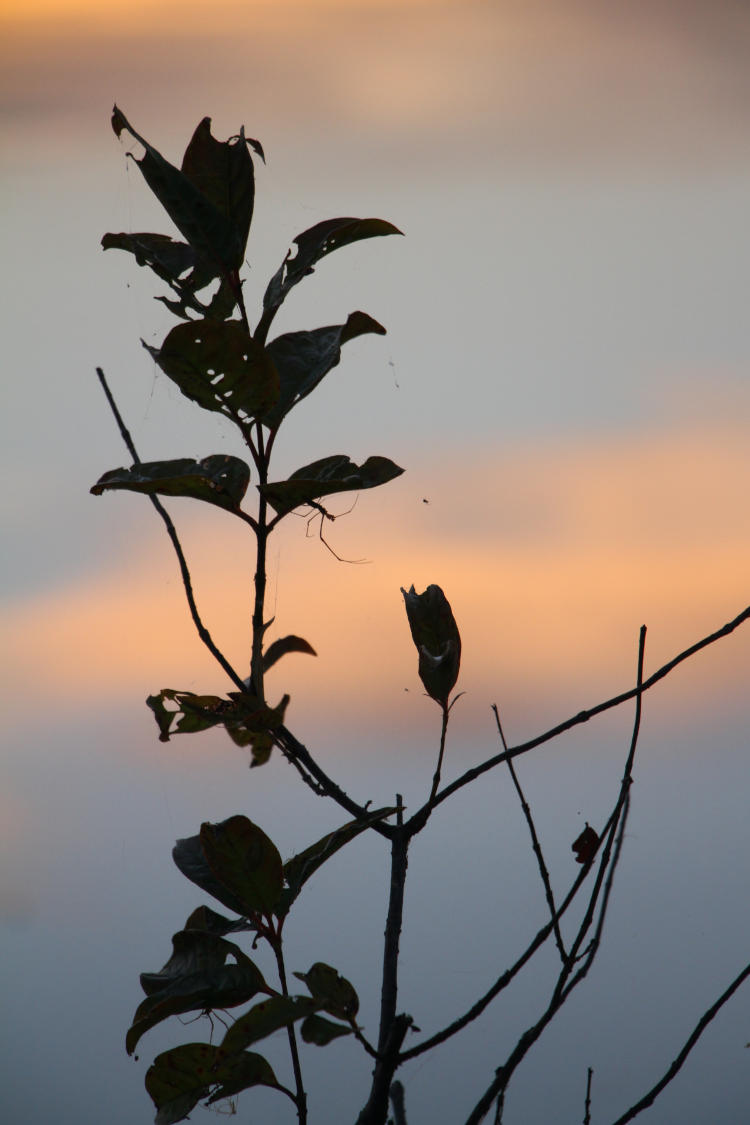
Shooting sunrise on Jordan Lake last week, I did a quick silhouette with one of the tiny, unidentified trees/bushes that appear sporadically out into the water a short ways (actually, this may be a buttonbush, Cephalanthus occidentalis.) Not the most prepossessing of plants, given the terrible shape of the leaves, but I was after the prominent long-jawed orbweaver spider, and only afterwards realized that I’d caught more than one – in fact, I’ve made out at least seven different spiders, or parts thereof (like legs peeking out) in this single frame, though granted, some of them require full resolution to discern.
But okay, on to the topic of the day.
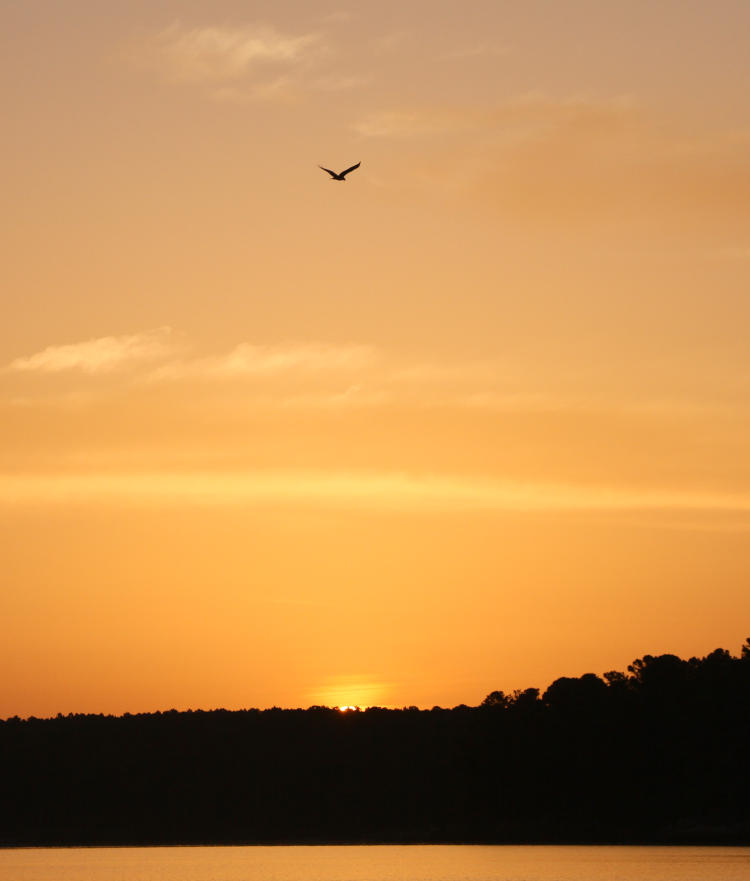
As the sun was just making its appearance over the trees, a lone osprey (Pandion haliaetus) cut across the sky, probably not able to see the sun fully from its altitude, but at least catching direct sunlight. The yellow color of the sky and the faint wisps of clouds indicate that it was a boring sunrise, but it’s central NC, so what else is new?
The great egrets (Ardea alba) were at least appearing here and there, not terribly active, but occasionally allowing some closer shots. One flew into a tree nearby, a little surprising, and sat up there preening even though we were obviously very close by.
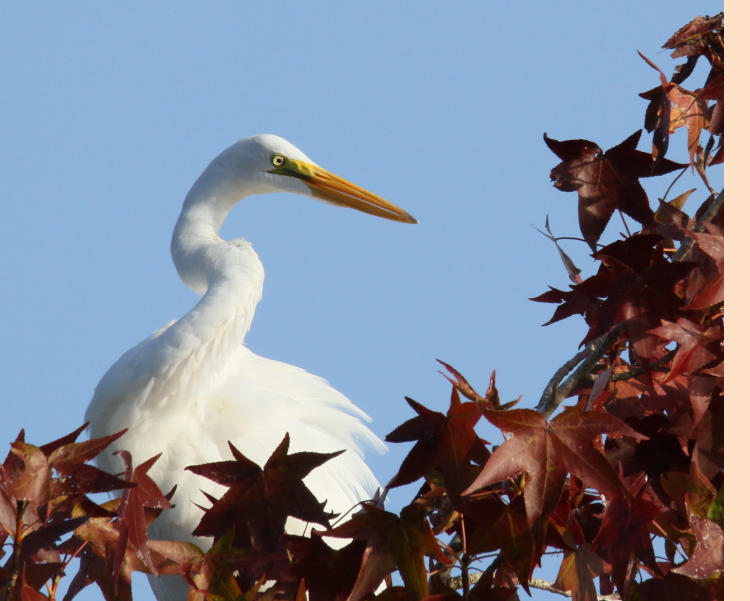
I liked this particular pose, aside from the sharp focus, because the egret’s head was held at just the right angle to cause its own cornea to light up the eye so distinctly while that portion of the head was shadowed. But only moments later, it fixed us with a faintly suspicious look before returning to its preening.

Definitely get the impression that the egret slept wrong last night, and also that we met with its disapproval somehow – probably has a thing about groundlings.
At another section of the lake, about a kilometer off, the vultures were congregating not just in great numbers, but without much regard for our presence either.
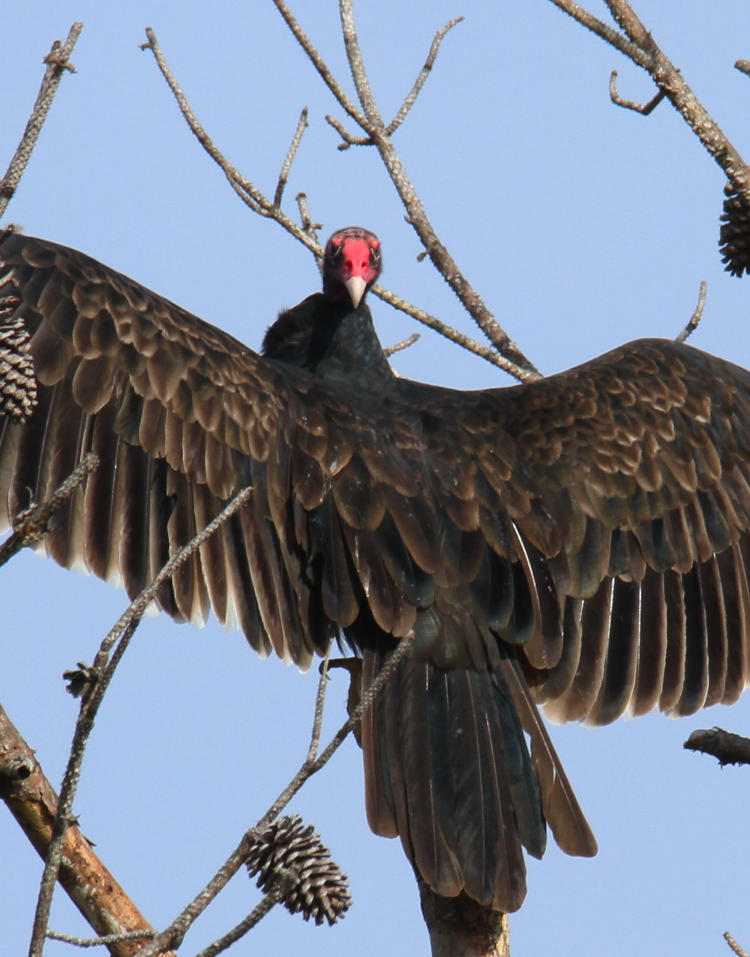
This turkey vulture (Cathartes aura) was at the edge of the parking lot at the boat ramps and had spread its wings for the morning sun as we crept closer, then peered at us straight over its back. Moments later, it decided that it was being too obvious and folded the wings with a bit more modesty.
A short distance away, a large number of black vultures (Coragyps atratus) were hanging out, mostly down near ground level, which allowed some great portrait opportunities, if you’re inclined towards that kind of thing.
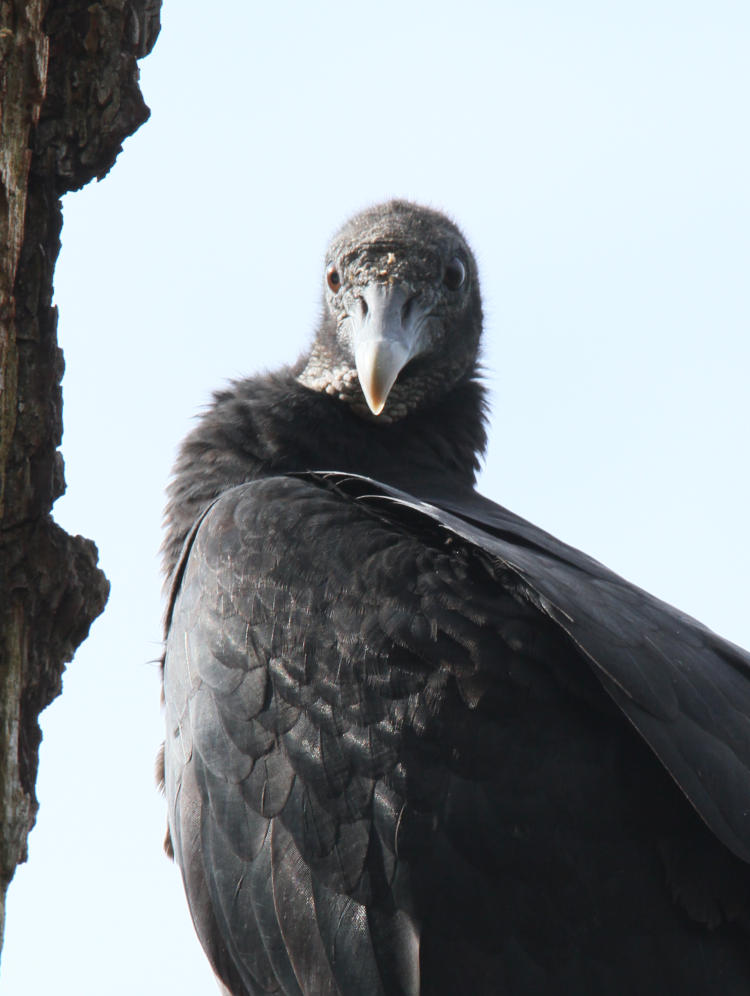
To the best of my knowledge, I wasn’t looking especially on the verge of dying (at least not any more than normal,) and I saw no indications of other food sources nearby, but they definitely were clustered around as if waiting for a handout. I made a joke about not having any dead crumbs, which passed completely without notice – I’m unappreciated in my time. Likely long afterward, too, but it sounds better this way.
I definitely don’t see enough of the red-headed woodpeckers (Melanerpes erythrocephalus,) and a trio, at least, provided some bare opportunities as they flitted among several trunks surrounding us. They allow me to provide a small illustration, anyway.
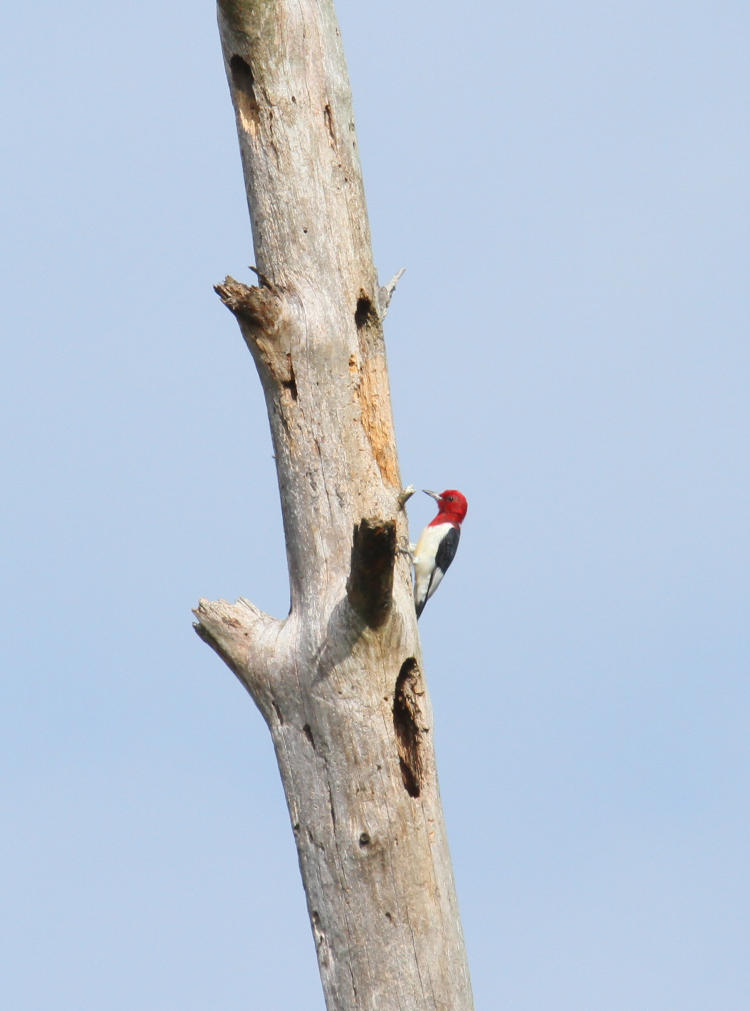
There were a pair working up this dead trunk, but they didn’t want to show themselves at the same time. However, since I was shooting against the brighter sky, with nothing else in the frame (and this is cropped tighter, so you can imagine that the non-sky portion wasn’t very significant,) I had dialed in some exposure compensation, 2/3 stop overexposed, or at least, over what the camera logic considered ‘proper,’ which is a middle tone, what’s called, “18% grey.” Without it, the photo would likely have been a bit dark, more than ideal, though it could be argued that this is a tad bright. Now we face in the opposite direction.
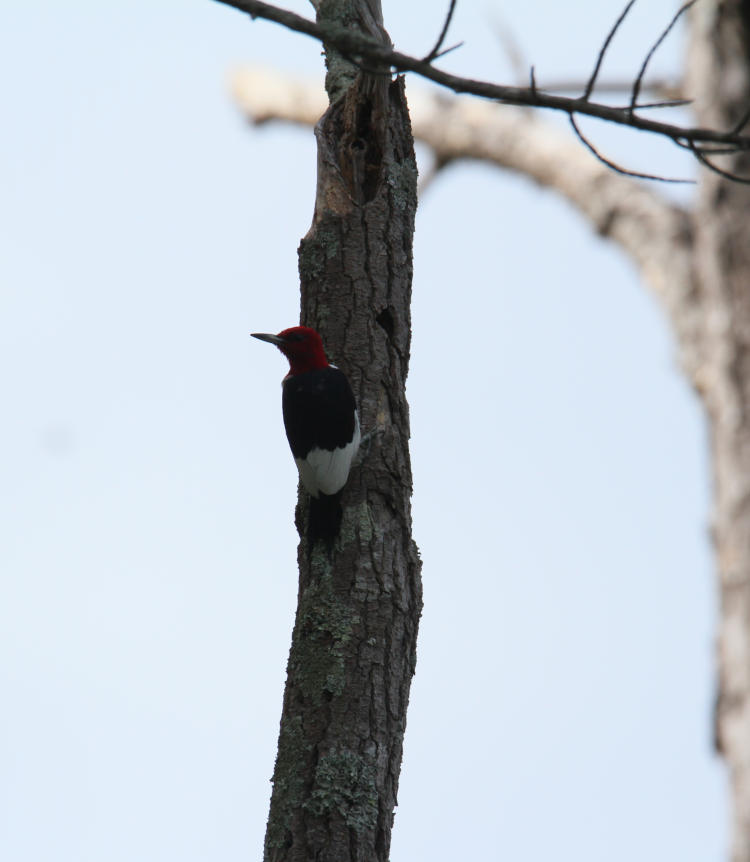
This is with the same compensation, now almost directly towards the sun (it was pretty high at this point, but in that general direction.) Even with the compensation, the frame is far too close to a silhouette, though admittedly, there were two other trunks in the frame (cropped out here) skewing the exposure reading slightly. What it shows is that getting a decent exposure while aiming into the sky can be tricky, and it’s a good idea to bracket the exposure whenever possible – a lot harder to do with hyperactive subjects that hold a decent pose for a mere second, but that’s how it goes in nature photography. Luck plays a large part, and exploiting that luck plays another.
Speaking of that…
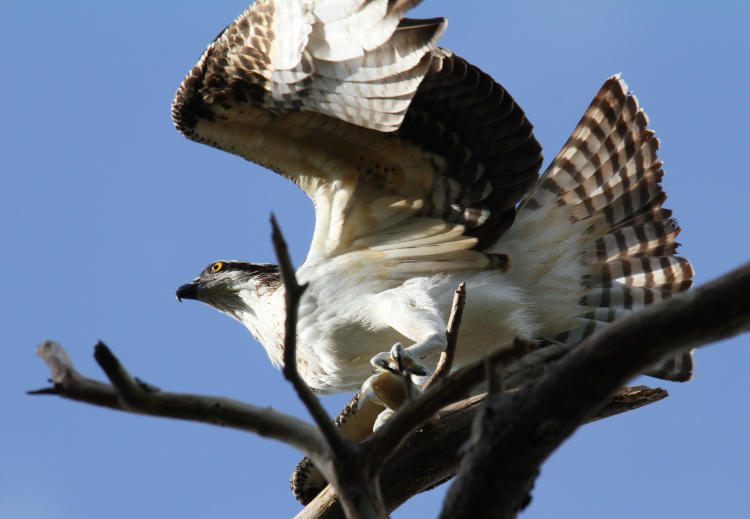
Spotting this osprey as it cruised in to a landing spot allowed some nice detail as it touched down in a tree almost directly overhead, a great opportunity, but I knew we were too close for comfort and it would be unlikely that the osprey would consume its meal there. We fired off the frames while we could.
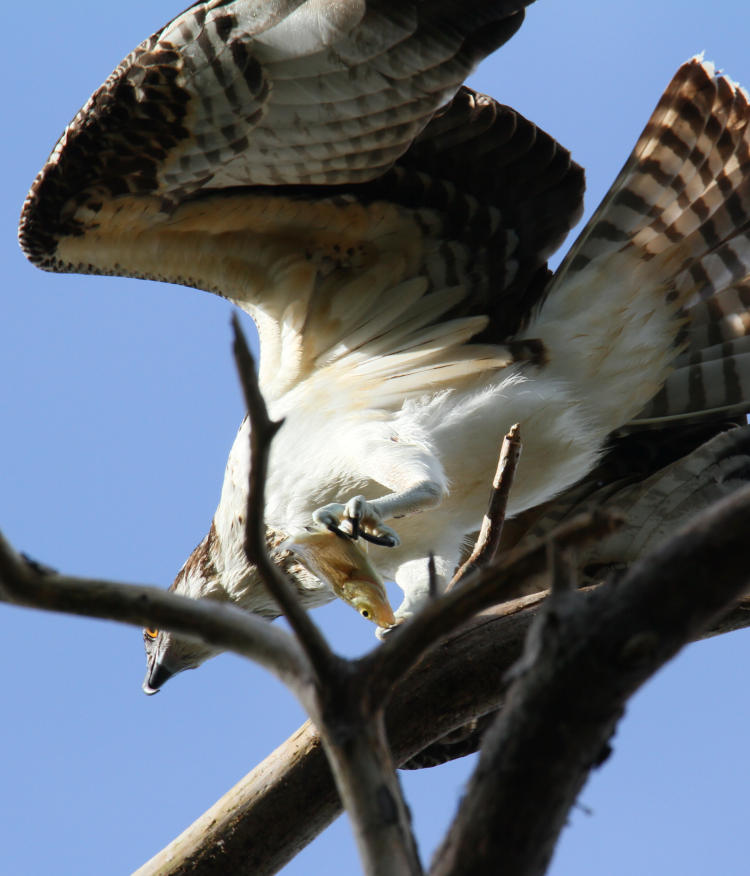
Not exactly a huge meal here, and we saw no views of any osprey in the area actively hunting. I wanted the eyes of both the osprey and the fish in the frame, though with the bird bobbing around on its perch, this wasn’t something to actively time – just fire off the frames and see what you got afterward. And then…
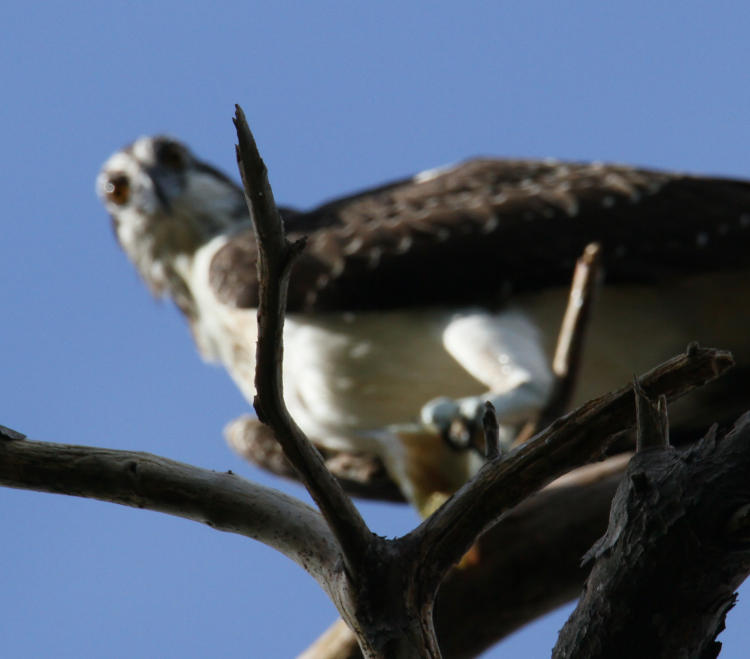
… that sonofabitch autofocus picks the exact moments when the osprey looked directly down at me to track in to the branch instead! Listen, I think autofocus is a marvelous application of technology, and it’s improved every year, but it still has far too many imperfections and quirks, which is why I frequently switch it off. I really want it on a thumb button, though, and not on a switch (one among four) on the body of the lens, especially since it sits right next to the vibration control switch and feels exactly alike.
A portion of this is my fault, though, since I programmed the camera to bias autofocus to track closer when it lost its lock. Here’s how it works: handholding a heavy lens with high magnification is tricky enough, and it takes the slightest twitch to have the subject leave the autofocus area of the frame – this is made even worse with moving subjects, or subjects high overhead where the position of holding the camera (and your own head) becomes awkward. I set the the AF to tend towards moving in slightly when it lost focus, for three reasons. The first is that it’s far too easy for the camera to then try to grab the horizon, much farther than the subject all too often, and by the time it tracks back the subject has been rendered so far out of focus that regaining it, sometimes even seeing it, becomes difficult and time-consuming. This was occurring too much as I tracked a bird in a dive and it crossed the horizon line, whereupon I’d miss the crucial entry into the water. Additionally, it more cases than not, the bird was actually coming closer, so tracking inward helped these circumstances. And finally, tracking inward (especially with the focus limiter on, which prevented the focus from traveling closer than 10 meters,) would more often not go as far out of focus as going to the horizon, so the camera would regain focus faster. All this does increase the chance that it’ll grab an intervening branch, however. I’d like to be mellow enough to say, “So it goes,” but more often, the response is, “goddamnitall anyway.”
Suffice to say, the osprey flew off immediately following this, so the 4-6 seconds of photo opportunities ended there. I could easily have missed all of the shots, or even seeing the osprey at all, so I’m well ahead of the game with a few nice frames. But still…




















































